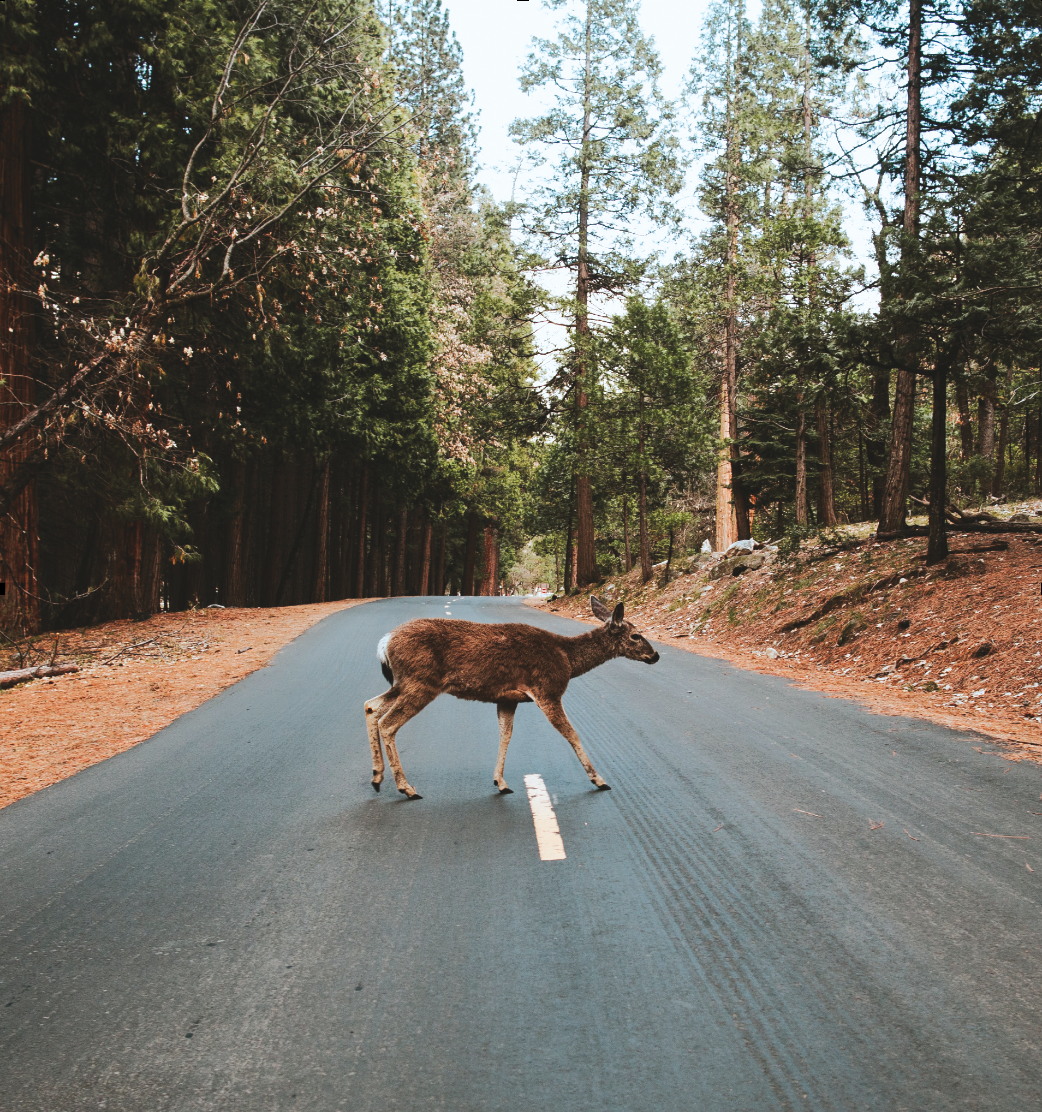As exciting as it is to spot a deer, bear or another Alberta animal while driving, you don’t want to get too close. In fact, a collision with animals account for 50 percent of all vehicle crashes in the province.
On average, six people are killed, and more than 300 are seriously injured every year across the province. Collisions also result in roughly $300,000 in insurance, health care and highway cleanup costs every day.
There are, however, steps you can take to avoid collisions—or ways to reduce the risk of injuries to you and your passengers if you do have an unfortunate encounter.
Crash avoidance
“First and foremost: slow down,” says Ryan Lemont, AMA’s manager of driver education. “The severity of a collision goes up exponentially with speed.”
Higher speeds also mean you’re less likely to avoid a collision if you spot an animal on the roadway. It takes about three-quarters of a second to perceive a potential danger. It takes another three-quarters of a second to react and move your foot from the gas to the brake. If you’re travelling at 60 km/h, your car will travel about 11 metres in 1.5 seconds. Double the speed to 120 km/h and you’ll travel more than 22 m before you even start braking.
And the faster you’re going the longer it will take your car to come to a complete stop. Depending on your vehicle’s weight, it can take anywhere from 200 m to over 400 m to come to a full stop from 120 km/h.
Slow down even more if you’re heading into a curve or approaching a hill—and whenever you see an animal crossing road sign. Never let your electronic devices divert your attention from driving. “Instead, you should be actively scanning the road ahead,” Lemont says. “Your head should basically be on a swivel.”
Time and season also play a factor. Most wildlife collisions occur from October through January between 7 and 11 p.m. November is mating season for deer and the peak month for crashes in the province. Many animals travel in groups, so there are likely others around if you see one. Nightfall naturally makes it harder to spot animals on the roadway edges, so use your high beams whenever it’s safe to do so.
MORE TO READ
Check out some more tips on how to avoid wildlife while driving.
After a collision
If a collision is imminent, “Stay in your lane; do not swerve to avoid the animal,” Lemont cautions. Swerving could direct you into oncoming traffic, the ditch or even cause your car to roll if you turn too hard at high speed.
After a collision, pull your car over to a safe location off the roadway and turn on your hazard lights. Call 911 if anyone is injured or the non-emergency number of the local police detachment if there are no severe injuries. Then notify your insurance provider of any damage.
If you leave the vehicle, make yourself as visible as possible. Wear a reflective vest if you have one, and deploy pylons or flares to warn other drivers of the hazard.
Finally, if the animal is alive but injured, do not approach it as injured animals can be dangerous. Contact the local Alberta Fish and Wildlife office to handle the situation. To have roadkill removed, call 310-0000.
